#Fix 1 – Scan for Virus/Malware
Just like the predecessor Windows 10 is also vulnerable to virus and malware infection. And if the PC/laptop is infected with viruses, then this can make your computer run slow.
So, make sure to scan your Windows 10 system with good antivirus software at a regular interval of time. If you are searching for a reliable antivirus tool, then here I strongly recommend you using Spyhunter.
It has multiple advanced features that will help you to keep your PC safe from virus/malware threats and will also remove the malware/virus o=infection from your computer.
Or you can also try removing the virus without using the antivirus software. For this, you need to do the following:
- Type cmd in the Windows Search bar.
- Right-click on the Command Prompt and select Run as administrator.
- Enter the command attrib g:*.* /d /s -h -r–s in the Command Prompt and press the Enter key (Here replace the letter g with your external hard drive’s drive letter)
And restart your Windows 10 computer and check if the Windows 10 slow to respond issue is resolved or not.
#Fix 2 – Disable Heavy Performance Processes
Generally, the third-party applications cause Windows 10 slow to respond. So, check and disable the third-party applications that are slowing down Windows 10 startup.
- Press Ctrl + Shift + Esc > open Task Manager
- As the Task Manager opens, go to the Startup tab, and sort the processes by the Startup impact rating.

- In high category disable processes but avoid disabling essential programs like antivirus.
Doing these easy tweaks will help you to improve Windows 10 performance by fixing Windows 10 very slow and unresponsive issues.
#Fix 3 – Enable Fast Startup Option
Microsoft has added the latest feature named Hybrid Startup and Shutdown. This will put your PC/laptop into the hibernation state and improves the startup and shutdown process.
This may consume somewhat more power but don’t turn off the machine completely. So, make sure to enable the fast startup option. Follow these steps to do the following:
- Press the Windows + S key and type the power settings.
- Choose Power & sleep settings.
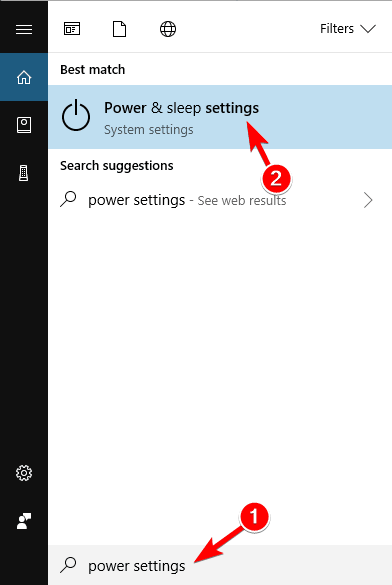
- Now click on the Additional power settings option.

- Click on the Choose what the power button does from the left menu.

- Now, Click on the Change settings that are currently unavailable.

- Check the box given next to the Turn on fast startup option and save your changes
Now check if the “Windows 10 is so slow and unresponsive issue” is resolved or not. If not, then try out the next solution.
#Fix 4 – Disable Unnecessary Services
Windows 10 contains plenty of Microsoft services, some of them are essential and some are unnecessary so, make sure to turn off unnecessary Windows 10 services for better performance.
You can simply do this by following the given steps:
- Press Windows + R key together to open the Run dialog box.
- In the Run box, type services.msc and click on the OK button.
- Now you can see all the services running on Windows 10.
- Right-click on the unnecessary services and select Properties.
- Go to the Startup Type and select the Disabled from the dropdown list.
- Finally, click on the Apply and OK button.
#Fix 5 – Disable Visual Effects and Transparency
Windows 10 is having many visual effects and other graphics that look beautiful but also slow down the Windows 10 system.
So, disable these effects to speed up Windows 10 performance. To do so, follow the below-given steps:
- Press Windows + I key to open the Windows Settings.
- Click on Personalization.

- Then click on Colors > set Transparency effects to Off.
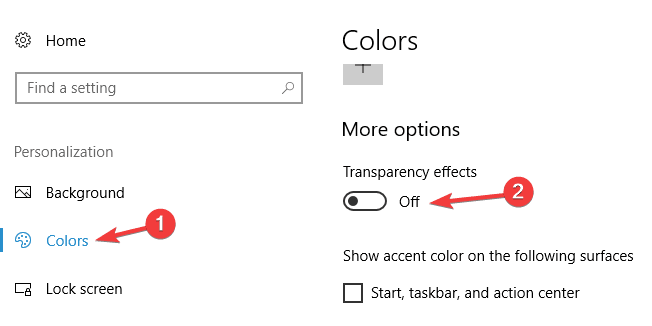
This method should work for you to fix Windows 10 so slow unusable and unresponsive.
#Fix 6 – Defragment your drive
As said above, the corrupted or fragmented hard drive can cause the Windows 10 slow to respond. So, here you need to defragment your drive, but if you are using the solid-state drive then skip this solution.
Windows 10 is having its own fragmentation tool, you can defragment your drives by using this. For this you need to follow the given instructions:
- Press the Windows + S key and type defrag on the Windows Search box.
- Select Defragment and Optimize Drives from the result.

- As the Optimize Drives window opens, choose the desired drive, and click on the Analyze button.

- After scanning the drives choose the fragmented drive and click on the Optimize.
- Now, wait till Windows defragments your drive.
- And after completing repeat the process for all drives.
As the defragmentation process is finished, restart your machine and check if the Windows 10 very slow and unresponsive issue is resolved or not.
#Fix 7 – Update your Drivers and Software
The outdated drivers and applications can also make the windows 10 slow, lagging, and freezing and the running programs get stuck in between. So, it is very important to update them with the latest updates.
Just like the applications, it is also important to update the outdated drivers as this may cause Windows 10 to slow to perform.
To update the drivers you can go to the Microsoft official website or to Manufacturer’s official website and search for the latest update and install them.
Despite this you can also make the whole process easy by making use of the Driver Easy, this automatically updates the drivers and fix other drivers related issues.
#Fix 8 – Adjust the Size of Virtual Memory
Virtual memory is very important for Windows 10 to perform better. Windows 10 automatically manages the size of virtual memory but it can be changed manually as well. Follow the steps to do so:
- Press Windows + S key and type advanced.
- Choose View advanced system settings from the search result.
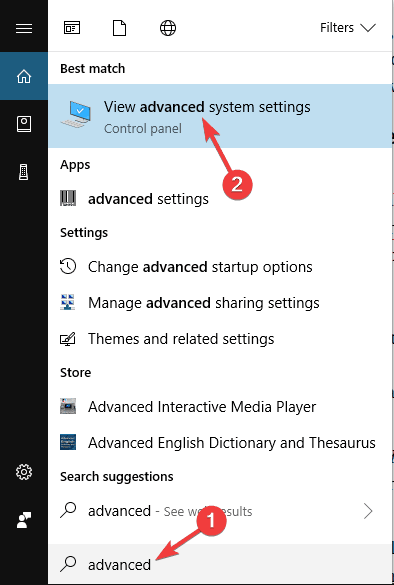
- Now System Properties window appears. Click on the Settings button in the Performance section.
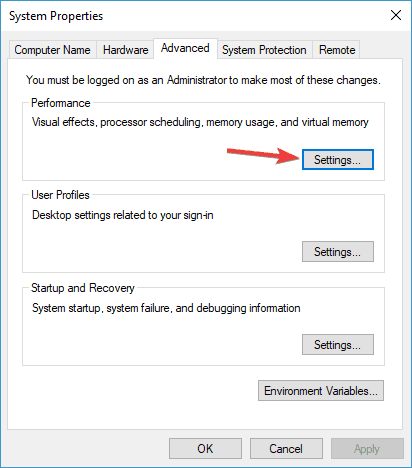
- In the Performance Options window, go to the Advanced tab and click on the Change button.

- As the Virtual Memory window opens, uncheck the automatically manage paging file size for all drives checkbox.
- Choose the Custom size, and enter Initial Size and Maximum size.

- Then click on the Set and OK button to save the changes you have made.
And after this, you need to set the virtual memory size for that drive and to fix the Windows 10 PC is very slow and unresponsive issue, you have to set the manual size for all drives.
The size of the virtual memory is related to the size of the RAM and as a common rule, the initial size should be at least 1.5 times larger than the amount of RAM memory on the PC.
And for maximum size, it should be at least 4 times larger than the amount of RAM on your PC.
#Fix 9 – Run SFC and DISM
Corrupted Windows system files often lead to various errors and issues on the computer. And these issues directly impact the performance of the PC.
So, if your Windows 10 PC is running slow and becoming unresponsive, then you can try the Windows inbuilt tool to deal with this issue. Here you have two tools SFC and DISM.
First, we will run the SFC tool and if it failed to fix the Windows 10 performance issue, then we will go with the DISM. So, to run the SFC scan, follow these steps:
- Open the Command Prompt with the admin privileges.
- In the Command Prompt, type the given command and press the Enter key to initiate it:
sfc/scannow
- Wait until the process is completed.
- Once the scanning is completed, restart your computer.
Now check if it helps to improve the performance issue. If not, then try the DISM. It is an advanced troubleshooting tool and can fix the issues that SFC cannot deal with.
- For this, first, open the Command Prompt as admin.
- In the Command Prompt, execute this command, and don’t forget to press the Enter key:
dism.exe /Online /Cleanup-image /Restorehealth
- Now, DISM will start to find the corrupt files on your system and will fix it automatically by replacing the corrupted files with the healthy copy.
#Fix 10 – Windows 10 Task Manager 100% Disk Usage Error
The 100% disk usage error in the task manager is another problem that may cause the Windows 10 slow performance. This is a common problem faced by users due to running multiple programs and software on the PC.
#Fix 11 – Perform a Clean Windows 10 Install
Hope the given tricks help you to fix the windows 10 very slow and unresponsive issue but if not, then it is advised to perform a clean Windows 10 install. Sometimes due to the software issues, while upgrading to Windows 10 from Windows 7 or Windows 8, the computer slows down.
So, perform a clean install of Windows 10 to fix the slow and unresponsive issue, but first backup the important data.





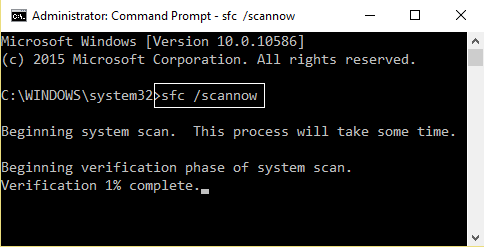

No comments:
Post a Comment